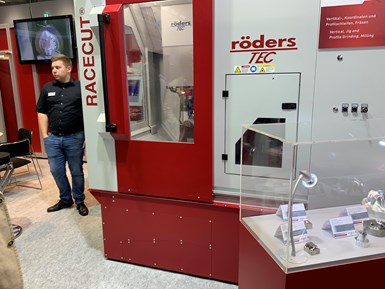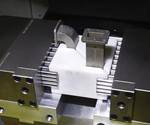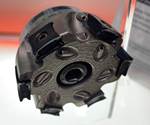Why Was CNC Machining on Display at the Biggest Show for Additive Manufacturing?
Machining is a complement to AM as a means of finishing metal 3D printed parts. The increasing adoption of AM for production means more need for postprocessing, particularly machining.
The annual Formnext show, which took place last month in Frankfurt, Germany, is the world’s leading exposition on additive manufacturing (AM) technology. Yet one of the sights that caught my eye at the show this year was the presence of metalcutting CNC machine tools. This additive show had examples of live “subtractive” metal removal.

DMG MORI debuted its Lasertec 125 3D hybrid machine, a large machining center capable of both AM via metal deposition and five-axis CNC machining. The work area, which measures 1,250 mm in diameter, accommodates big workpieces, allowing the hybrid capabilities to be used for applications such as mold repair.
To be fair, there always have been CNC machine tools at this show. That is, there have been CNC machines adapted for AM, including hybrid machine tools performing both additive metal deposition and subtractive metal cutting in the same cycle. But this year, there were CNC machines doing just the subtraction and nothing else, just the cutting and nothing else — just the work we associate with machine tools. This is because CNC machining is a complement to metal AM as a means of postprocessing, of realizing the final dimensional and finish tolerance of additive parts, and the ongoing advance of AM into production is making postprocessing an increasingly important part of Formnext’s exhibits.

In Spee3D's booth, copper hammers made additively were CNC milled to finish tolerances.
One example was in the Spee3D booth. This company’s supersonic 3D deposition process builds metal parts rapidly, and at the show, the company demonstrated this capability by building the rough form of a copper hammer in a metal 3D printing cycle that lasted about six minutes. Then, in the same booth, a Haas machining center finish-milled the part in a machining cycle of about the same length of time.

At the additive manufacturing show, Roeders demonstrated its high speed, precision five-axis machining.
Yet another exhibitor showed just CNC machining with no 3D printing. Machining center maker Roeders demonstrated its high speed, precision five-axis machining as an effective resource for rapidly milling the sort of intricate parts created by AM. The Roeders demo subtly conveyed another message as well. Namely, efficient and precise five-axis milling is also an excellent resource for producing those intricate forms in the first place, meaning additive isn’t the only way to make an intricate part.
From sister brand Additive Manufacturing, read more about technology and themes at this year’s Formnext and watch a video about eight interesting 3D printed parts seen at the show.
Related Content
-
6 Machine Shop Essentials to Stay Competitive
If you want to streamline production and be competitive in the industry, you will need far more than a standard three-axis CNC mill or two-axis CNC lathe and a few measuring tools.
-
An Additive Manufacturing Machine Shop
Finish machining additively manufactured implants requires different pacing and workflow than cutting parts from stock — different enough for an experienced manufacturer to warrant a dedicated machine shop.
-
Lean Approach to Automated Machine Tending Delivers Quicker Paths to Success
Almost any shop can automate at least some of its production, even in low-volume, high-mix applications. The key to getting started is finding the simplest solutions that fit your requirements. It helps to work with an automation partner that understands your needs.

.jpg;width=70;height=70;mode=crop)






.jpg;maxWidth=300;quality=90)







.jpg;maxWidth=970;quality=90)